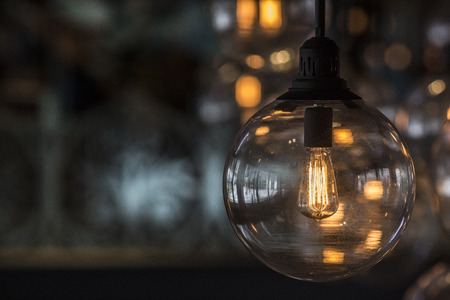Introduction to Ambient Lighting in British Homes
Ambient lighting plays a central role in shaping the character and comfort of British homes. Unlike task or accent lighting, ambient lighting provides a gentle, all-encompassing illumination that creates an inviting atmosphere, making living spaces feel warm and lived-in. In the UK, where the climate is often grey and daylight hours can be short, the importance of effective interior lighting cannot be overstated. Table and floor lamps have become staples of domestic life, reflecting not only functional needs but also evolving cultural tastes. Over time, their designs have shifted in response to changing technologies, architectural styles, and social habits. This enduring focus on ambient lighting has helped define the unique mood of British interiors, where cosiness and hospitality are highly valued. As we trace the historical evolution of table and floor lamps in the UK, it becomes clear that these objects are more than mere furnishings—they are markers of lifestyle, innovation, and tradition within the British home.
2. Early Illumination: From Candlelight to Gas Lamps
Before the advent of electricity, ambient lighting in Britain was a complex interplay of practicality, social status, and available technology. The earliest forms of table and floor lamps were shaped by the need for portable and flexible sources of light in domestic settings. Let’s explore how these early illumination methods influenced lamp design and daily life across different periods.
Candlelight: Foundations of Domestic Lighting
In medieval and early modern Britain, candles were the primary source of artificial light in most homes. Candleholders ranged from simple wooden or wrought iron stands to more elaborate brass candlesticks reserved for wealthier households. Table lamps during this era were often nothing more than candle sconces or small holders set upon sturdy tables. Floor-standing candelabra, found mainly in grander homes, provided both illumination and a display of affluence.
Key Features of Candle-Powered Lamps
| Type | Material | Main Use | Social Context |
|---|---|---|---|
| Table Candlestick | Brass, Pewter, Wood | Task lighting (reading, writing) | Common across classes |
| Floor Candelabrum | Iron, Silver | Ambient room lighting | Nobility & wealthy households |
| Candle Lanterns | Tin, Glass panels | Portable illumination | All classes, especially rural areas |
The Arrival of Oil Lamps
The late 18th century saw whale oil and later colza or paraffin oil become popular fuels. Oil lamps offered brighter and steadier light compared to candles and could be designed as both table-top and standing fixtures. The Argand lamp, invented in the 1780s, revolutionised domestic lighting with its cylindrical wick and glass chimney. British manufacturers quickly adapted these designs for local tastes, blending functionality with ornate Victorian aesthetics by the mid-19th century.
Main Advantages Over Candles
- Longer burn time per fill
- Cleaner flame with less smoke
- Larger reservoirs allowed for bigger lamps suitable for floors or communal spaces
The Gas Lamp Revolution
The introduction of piped coal gas in the early 19th century marked a significant leap in ambient lighting, particularly in urban centres like London and Manchester. Gas lamps enabled much brighter and more reliable illumination than either candles or oils, though their installation required new infrastructure. While fixed wall or ceiling fixtures dominated public spaces, gas-powered table and floor lamps began appearing in affluent Victorian homes.
Cultural Impact on Lighting Habits
This transition from candlelight to gas dramatically altered daily rhythms; evenings grew longer as people gathered under improved lighting for reading, needlework, or socialising. The design of furniture changed too—side tables were now positioned closer to light sources, while floor lamps became central features in drawing rooms rather than mere accessories.
The legacy of these formative centuries is still visible today; many classic lamp forms trace their lineage back to these ingenious early solutions for bringing light into the British home.

3. The Electric Revolution: Table and Floor Lamps in the Victorian and Edwardian Era
The late 19th and early 20th centuries marked a profound transformation in British domestic life, driven by the shift from gas to electric lighting. During the Victorian era, gas lamps were commonplace, casting a distinctive warm glow that became synonymous with period interiors. However, as electrification spread across the United Kingdom, households began to embrace this safer and more versatile form of illumination.
This transition sparked remarkable innovation in lamp design. With no need for cumbersome gas fittings or bulky mantles, designers experimented with new forms and materials. Table and floor lamps evolved from purely functional items into decorative centrepieces. Ornate brass stands, stained glass shades—most notably popularised by the Tiffany style—and elegant ceramic bases became fashionable among the British middle classes. The versatility of electric lighting enabled lamps to be positioned flexibly throughout sitting rooms, bedrooms, and studies, reflecting changing patterns of domestic life.
The influence on British lifestyle was significant. Electric table and floor lamps offered greater control over lighting levels, fostering an atmosphere conducive to reading, needlework, and social gatherings after dark. This newfound adaptability contributed to the rise of cosier, more intimate interior arrangements characteristic of Edwardian homes. Lighting aesthetics shifted accordingly; softer bulbs and diffused shades replaced the harsh glare of early electric lights, aligning with evolving tastes for comfort and understated elegance.
These innovations also dovetailed with broader artistic movements such as Arts & Crafts and Art Nouveau, both of which championed craftsmanship and organic forms. Lampmakers responded by producing pieces that not only illuminated but also enhanced the visual appeal of British interiors. In this way, the electric revolution fundamentally changed how Britons experienced their living spaces—ushering in an era where ambient lighting was as much about artistry as utility.
4. Post-War Britain: Modernism, Mass Production, and Changing Tastes
The aftermath of the Second World War brought a seismic shift in British society and its approach to home interiors. As cities rebuilt and new housing estates emerged across the UK, the demand for accessible, affordable ambient lighting soared. This period saw an explosion in modernist design principles—championing simplicity, functionality, and the honest use of materials—which directly influenced the look and feel of table and floor lamps found in British homes.
Materials and Manufacturing Innovations
The war years had introduced new materials such as Bakelite, aluminium, and later plastics into mass production. These became staples in post-war lamp manufacturing, replacing or complementing traditional brass, glass, and ceramics. The adoption of these materials allowed for more daring forms and colour palettes, which resonated with a public eager for fresh aesthetics after years of austerity.
| Material | Characteristics | Impact on Lamp Design |
|---|---|---|
| Bakelite | Lightweight, mouldable, affordable | Enabled streamlined shapes and bold colours |
| Aluminium | Durable, modern appearance | Favoured in minimalist modernist designs |
| Plastics (e.g., acrylic) | Translucent, versatile | Allowed playful forms and diffused lighting effects |
| Ceramics/Glass (continued use) | Textural variety, traditional appeal | Combined with new materials for hybrid styles |
The Rise of British Manufacturers
This era witnessed the emergence of iconic British manufacturers such as Anglepoise, Bestlite, and Habitat. These brands became synonymous with quality craftsmanship and forward-thinking design. The Anglepoise lamp—originally invented by George Carwardine in the 1930s—rose to prominence post-war as a symbol of functional elegance and adaptability. Similarly, Bestlite’s Bauhaus-inspired lamps graced both domestic spaces and professional environments.
Key British Lighting Brands (1945–1970)
| Brand | Signature Product | Design Features |
|---|---|---|
| Anglepoise | Original 1227 Table Lamp | Adjustable arms; industrial style; task/ambient blend |
| Bestlite | BL1 Table Lamp | Bauhaus influence; minimalist silhouette; chromed metal/opal glass shades |
| Habitat (from 1964) | Diverse lamp collections | Modernist forms; affordability; wide material palette |
The Impact of Modernism on Everyday Life
The clean lines and lack of ornamentation that typified modernist lighting fitted perfectly with the evolving sensibilities of mid-century Britain. As open-plan living gained popularity in new builds from Sheffield to Croydon, portable table and floor lamps played a crucial role in defining ‘zones’ within multipurpose rooms. The focus shifted from purely decorative lamps to those serving flexible roles—reading lights by armchairs or soft ambient glows atop sideboards—mirroring broader social changes in work-life balance and leisure.
Cultural Shifts Reflected in Lighting Choices
- Preference for understated elegance over ostentation.
- Lamps as practical tools rather than luxury status symbols.
- An embrace of international influences alongside a distinctively British practicality.
This period marked a critical turning point: ambient lighting was no longer just about illumination or opulence—it became integral to expressing the optimism and forward-looking spirit of post-war Britain.
5. Contemporary Trends: Sustainability and Smart Technology
The landscape of ambient lighting in the UK has witnessed a significant transformation in recent years, propelled by the dual forces of sustainability and technological innovation. Modern British households are increasingly prioritising eco-friendly practices when it comes to table and floor lamps. This shift is evident in both consumer preferences and manufacturing approaches.
Eco-Friendly Practices in Lamp Design
Today, there is a marked emphasis on utilising sustainable materials such as recycled metals, responsibly sourced wood, and biodegradable components in lamp production. Many UK-based brands have adopted energy-efficient LED bulbs as standard, reducing both electricity consumption and carbon footprint. In addition, packaging now frequently employs recyclable or compostable materials, aligning with broader national efforts to minimise waste.
Smart Lighting Solutions
Another defining trend is the integration of smart technology into ambient lighting. Table and floor lamps are no longer merely functional objects; they are becoming interactive elements within the smart home ecosystem. Through Wi-Fi or Bluetooth connectivity, users can control brightness levels, colour temperature, and even set automated schedules using smartphones or voice assistants like Alexa or Google Home.
Adoption in UK Households
The adoption rate of smart lighting solutions is notably high in urban centres such as London, Manchester, and Edinburgh, where residents seek both convenience and energy savings. Features like motion sensors, remote dimming, and programmable routines cater to the contemporary British lifestyle—one that values efficiency without compromising on comfort or ambience. As a result, modern table and floor lamps in the UK reflect a harmonious blend of tradition, sustainability, and cutting-edge technology.
6. Ambient Lighting and the British Sense of Home
The relationship between ambient lighting and the uniquely British sense of home cannot be overstated. Across the UK, there is a distinct appreciation for the “cosiness” or what locals fondly refer to as “hygge”—a borrowed Scandinavian term that has found fertile ground in British culture. Table and floor lamps play an essential role in shaping this atmosphere, moving beyond mere functionality to become central elements in the creation of inviting living spaces.
Unlike harsh ceiling lights, table and floor lamps offer a softer, more diffuse illumination that gently fills a room without overwhelming it. This quality is especially valued during the long, often gloomy British winters, when natural daylight is scarce. The strategic placement of lamps in alcoves, beside armchairs, or atop side tables encourages intimate gatherings and quiet evenings—a hallmark of British domestic life.
Furthermore, the act of switching on a lamp at dusk carries a ritualistic significance for many British households. It signals a transition from the bustle of daily activities to the comfort of private life, underscoring the importance of personal sanctuary. The warm glow emitted by these lamps enhances textures and colours within interiors, highlighting everything from richly patterned textiles to cherished family heirlooms.
In architectural terms, period homes across the UK—whether Victorian terraces or Edwardian semis—are often characterised by smaller rooms and lower ceilings. Ambient lighting provided by table and floor lamps complements these spaces perfectly, allowing residents to create pockets of light that accentuate architectural features while preserving an overall sense of intimacy.
Ultimately, the historical evolution of ambient lighting in Britain has helped to define not just aesthetics but also emotional wellbeing within the home. By fostering warmth and relaxation through thoughtful illumination, table and floor lamps have become synonymous with the British pursuit of comfort—a testament to their enduring appeal and cultural significance.


